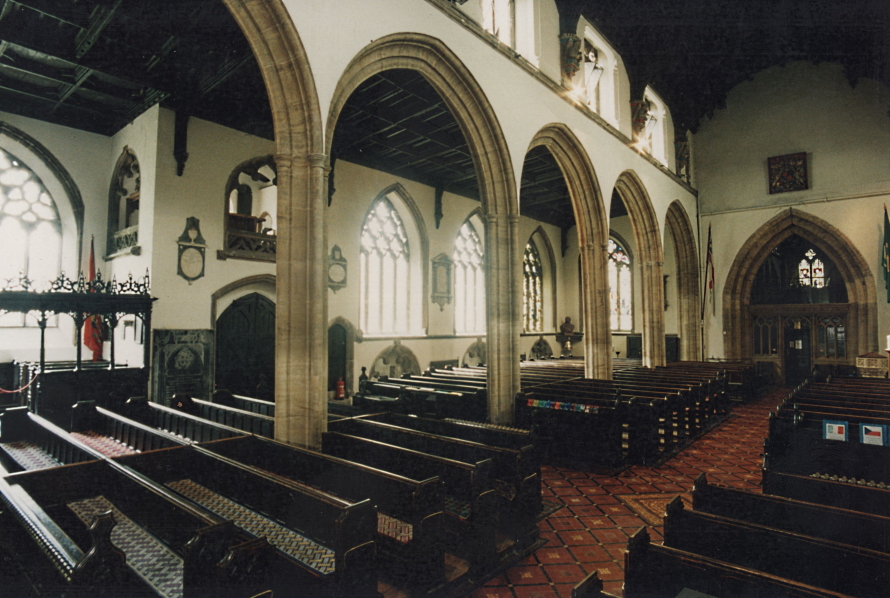
St Mary’s was, before the recent re-ordering, rich in modern needlework. As well as the clergy vestments and the altar frontals, and the various tapestry items still in the choir and sanctuary, military flags in St George’s Chapel and banners for groups like the church choir, there were numerous tapestry pew runners and kneelers, all made by members of the congregation in the 1960s and 1970s. Most of the runners had simple geometric designs, but several had religious themes; others the badges of various organisations like the Royal British legion, the Scouts and the Sea Cadets; others commemorated deceased church members.
A unique runner was made in 1972, by a retired doctor, living at Burnham, and then in his 80s. He had taken up tapestry and also silver-smithing to overcome the stress of running a large mental hospital during the second world war. It was about 9ft long and was placed on a bench in the North aisle, which backed onto the transept there. There were on it 70 pictures and symbols, old and new, including the Burnham lighthouse and Hinckley Point power station. A considerable talking point in the church.
The church’s colours
Each type of festival and fast has its distinctive colour – shown in altar frontal, vestments, stole, pulpit fall and bookmarkers, The colours thus announce the church’s year. These are the colours and their meaning:
- WHITE (or cream or gold); The joyful festivals, especially Christmas, Easter and Ascension. Also for saints and martyrs.
- RED is the colour of blood and fire. Used for Whitsunday,and for martyrs.
- PURPLE speaks of penitence and preparation — used for Lent and Advent.
- GREEN is for ordinary non festival Sundays.
List of Pew Runners
North and South Aisle pews
- 1) Dyer — family memorial
- 2) British Legion women
- 3) Somerset Light Infantry
- 4) Royal Air Force Association
- 5) Boy Scouts
- 6) British Legion
- 7) Burma Star Association
Nave pews
- 1) Bryer — family memorial
By the Swan Transept
- 1) Memorial runner to Carl Swan
- 2) Illustrative piece with building skylines from the neighbourhood
All the runners were removed for the re-ordering and have since disappeared: the only one remaining, commemorated Bridgwater’s first Mayor, John Kendal, (Mayor 1469-1472). This had been secured in a glazed frame on the wall of the North transept, a few years before the re-ordering.
